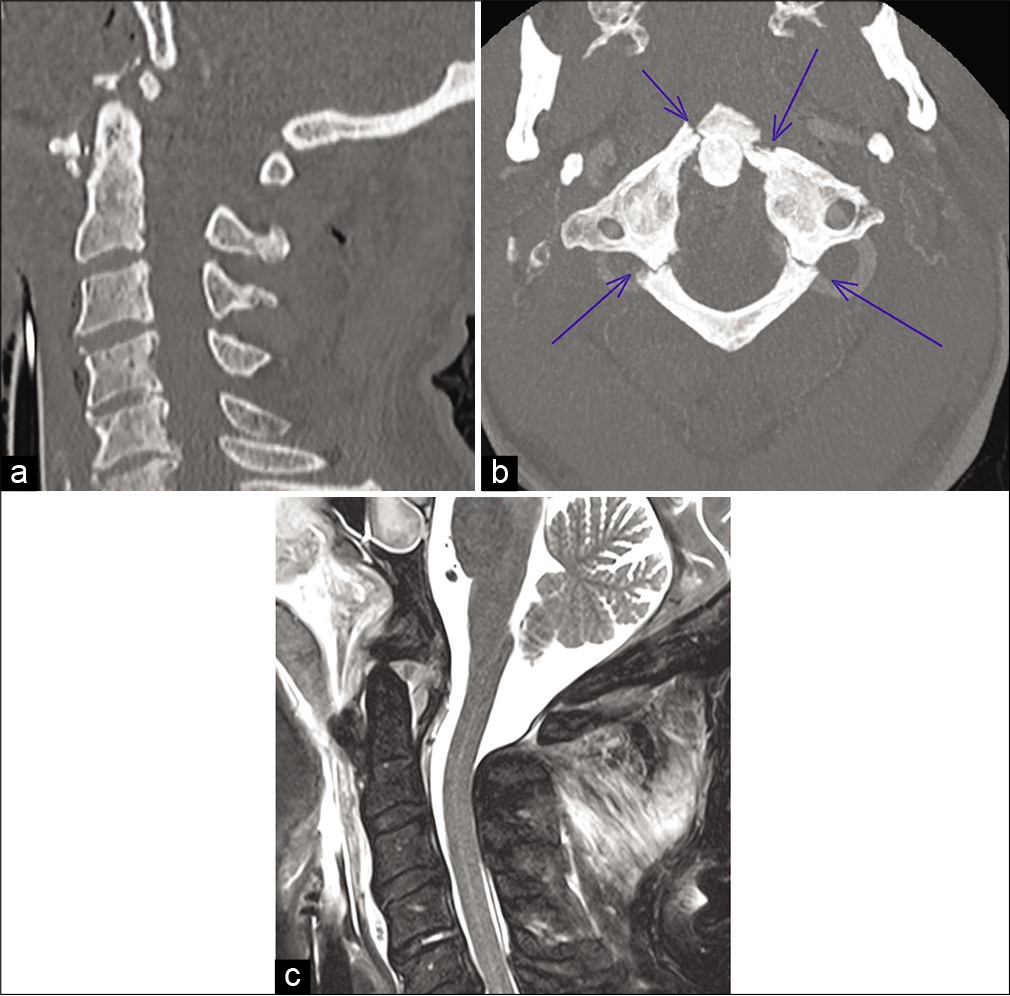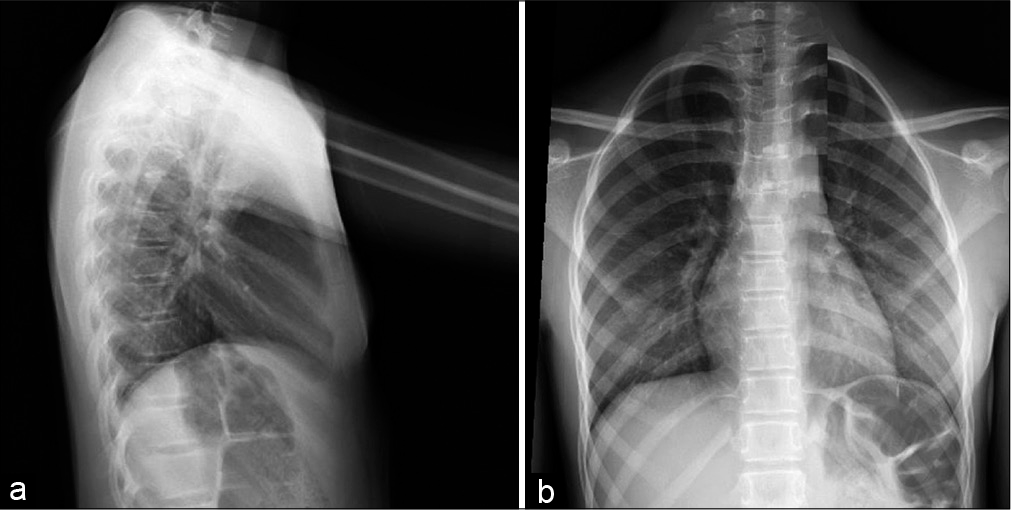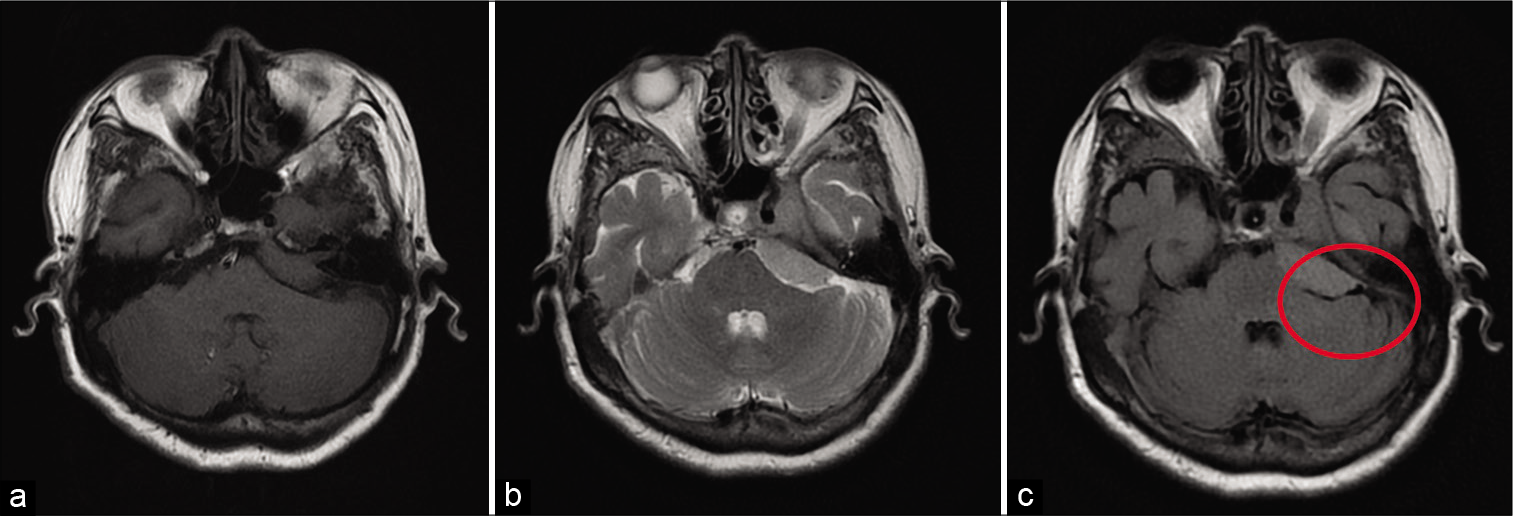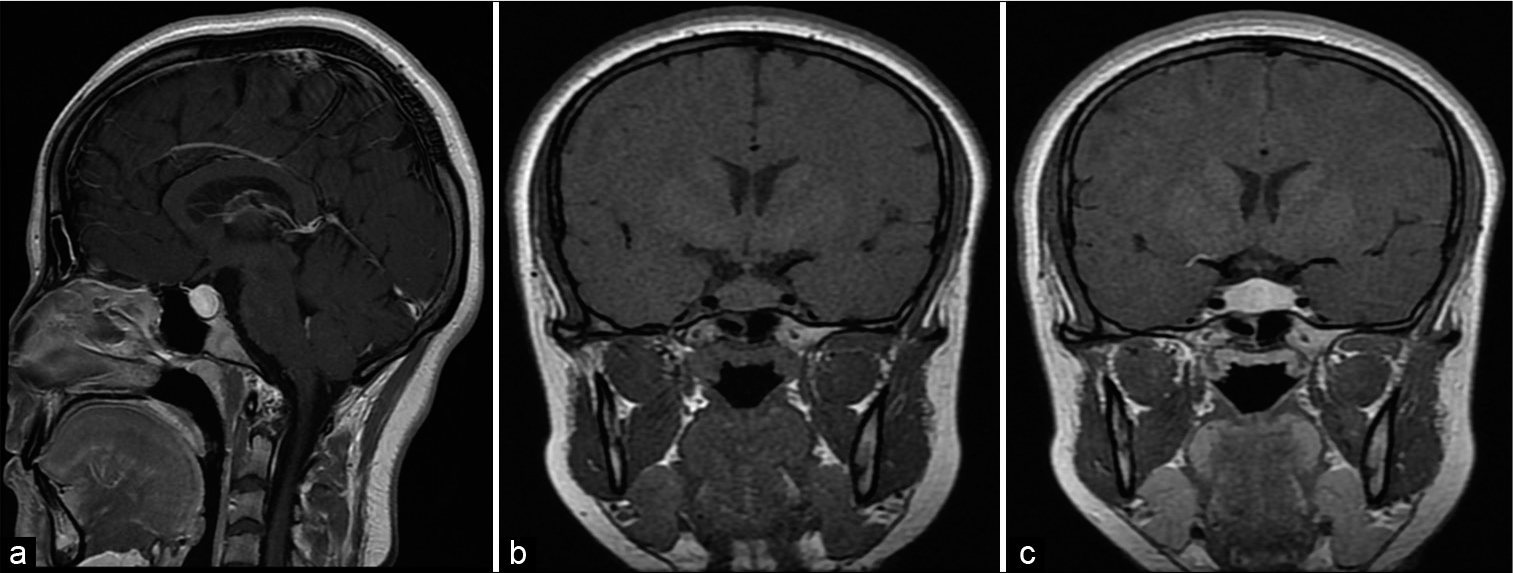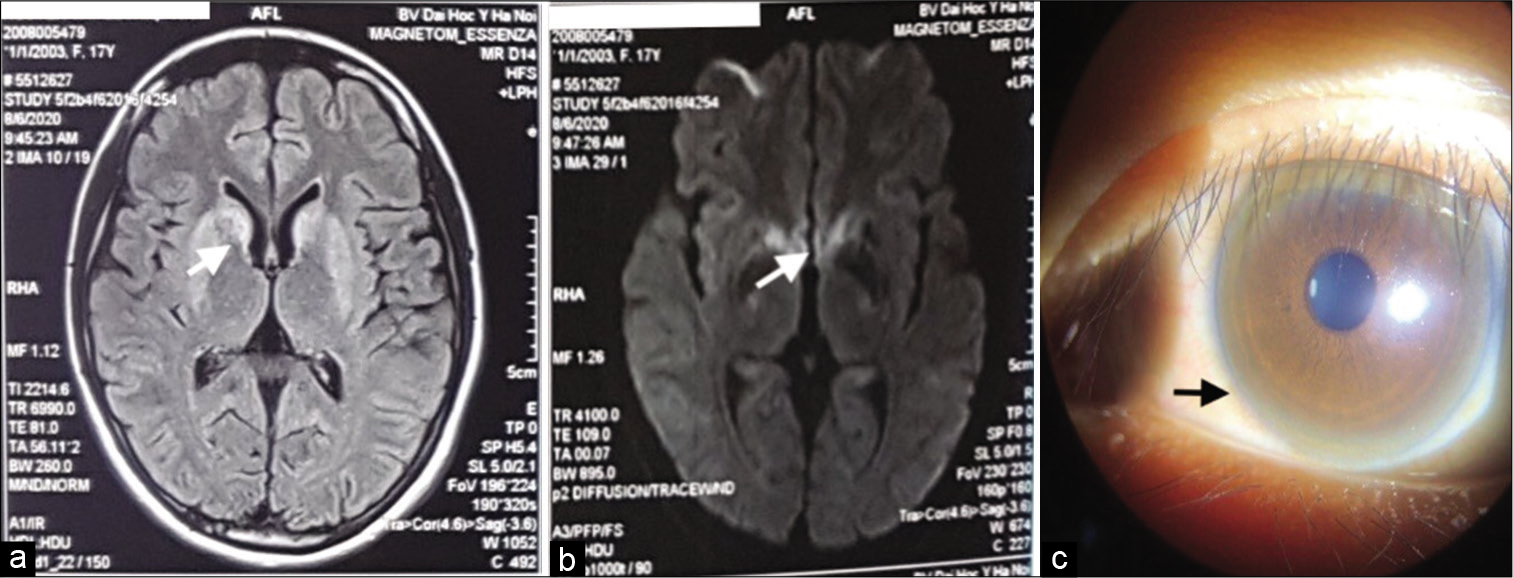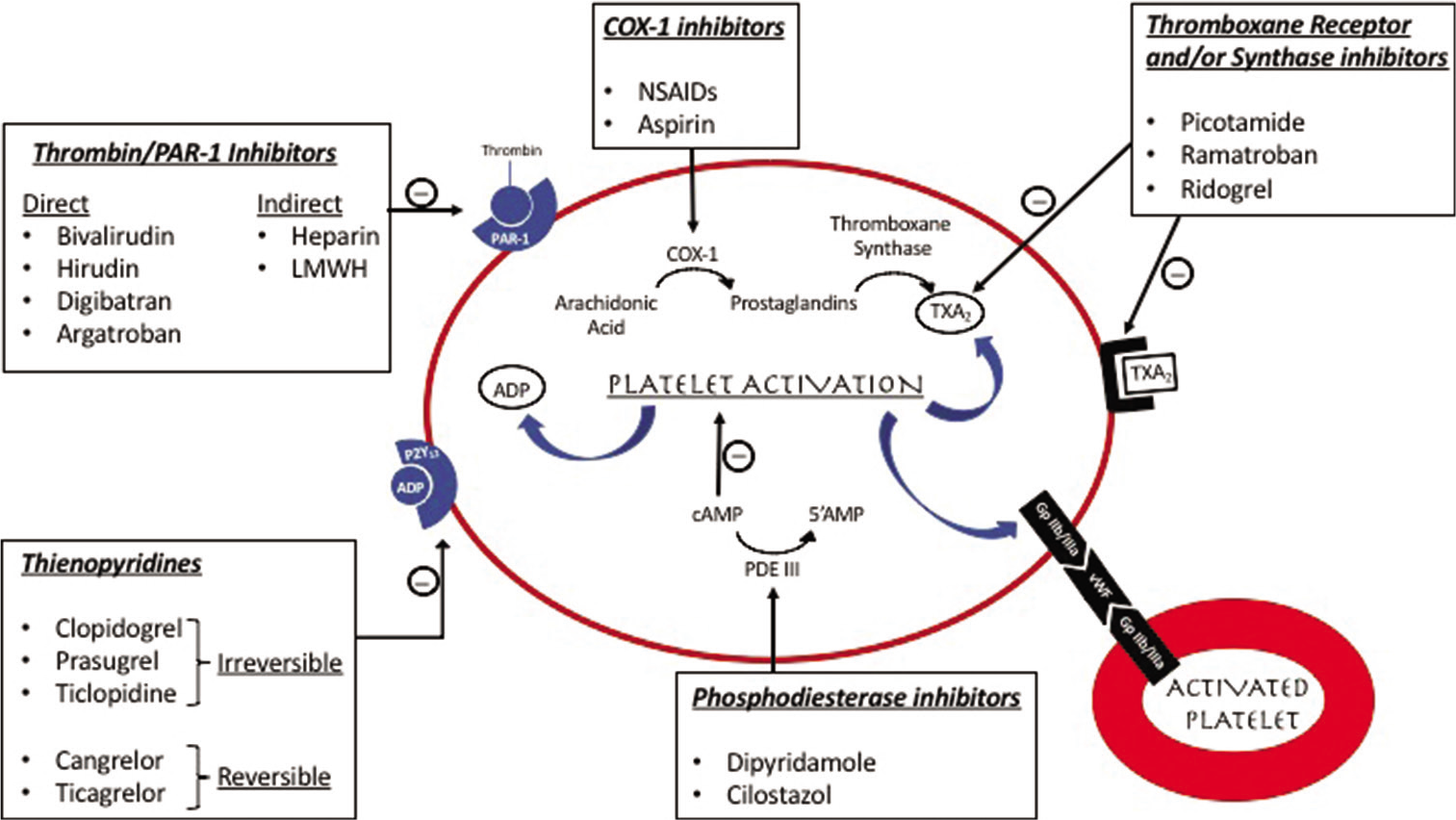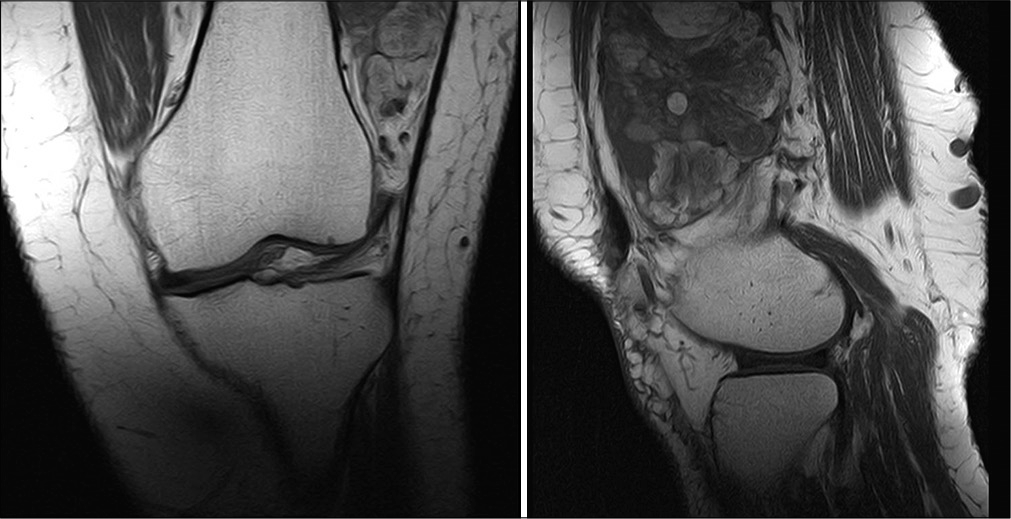Pharyngeal perforation: A rare complication of occipitocervical injury
Date of publication: 28-Jun-2021
Background: Atlantoaxial dislocation is a rare injury following high-energy trauma. We report an undescribed complication of atlantoaxial dislocation.
To cut or not to cut? A case report on pediatric intervertebral disc calcification
Date of publication: 28-Jun-2021
Background: Intervertebral disc calcification (IVDC) is a rare cause of acute spinal pain in pediatric patients. The most common symptom is back or neck pain, but muscle spasm, muscle weakness, and sensory loss also occur. Many patients have an alarming presentation and radiological findings concerning for spinal cord compression.
Deadly complication of sacrificing superior petrosal vein during cerebellopontine angle tumor resection: A case report and literature review
Date of publication: 28-Jun-2021
Background: Tumors of the cerebellopontine angle (CPA) are challenging to resect and have been proven difficult for neurosurgeons to manage optimally. Superior petrosal vein complex (SPVC) as the main drainage system and close proximity to CPA could be an obstacle during operation. There is an incidence ranging from 55% to 84% of injury to one part of the SPVC during CPA tumor surgery.
Ectopic intraconal orbital meningioma – A rare case report
Date of publication: 28-Jun-2021
Background: Ectopic orbital meningiomas (OM) are a rare subset of OMs which are neither attached to the optic nerve sheath nor to the surrounding bone.
Clinical presentation and management of hypophysitis: An observational study of case series
Date of publication: 28-Jun-2021
Background: Hypophysitis is described as a rare chronic inflammatory affection of the pituitary gland. However, to date, its pathogenesis has not been completely cleared up. Clinical features are polymorphic, including symptoms related to inflammatory compression and/or hypopituitarism. Laboratory tests determine hormone deficiencies orientating replacement therapy’s protocol. MRI of the hypothalamic-pituitary region is crucial in exhibiting major radiological signs such as pituitary homogeneous enlargement and gland stalk’s thickening. The etiological diagnosis is still challenging without affecting the management strategy. Corticosteroids have widely been used but a close follow-up without any treatment has also been approved.
A case of Wilson disease with the ATP7B mutation presenting movement disorders
Date of publication: 28-Jun-2021
Background: Wilson disease is an autosomal recessive condition manifested when abnormal copper accumulation in the body particularly involving many organs such as brain, liver, and cornea. Diagnosis is challenging with the completion of tests in blood and urine, a liver biopsy, and clinical evaluation. ATP7B mutations with more than 600 identified variants are the genetic disorders of Wilson disease.
Perioperative dual antiplatelet therapy for patients undergoing spine surgery soon after drug eluting stent placement
Date of publication: 28-Jun-2021
Background: Performing emergent spinal surgery within 6 months of percutaneous placement of drug-eluting coronary stent (DES) is complex. The risks of spinal bleeding in a “closed space” must be compared with the risks of stent thrombosis or major cardiac event from dual antiplatelet therapy (DAPT) interruption.
Cerebellar metastasis of a Liposarcoma: Case report and literature review
Date of publication: 21-Jun-2021
Background: Liposarcoma (LPS) is a rare type of tumor; they come from the adipose tissue. It is the most common type of soft-tissue sarcoma. Every type of LPS has morphological features, immunophenotypic, and molecular pathogenesis characteristics of their own. In this case, we are going to report a cerebellar metastatic disease from a well-differentiated liposarcoma (WDL) with pleomorphic component, not found in our literature research.
Intravenous versus inhalational anesthesia trial for outcome following intracranial aneurysm surgery: A prospective randomized controlled study
Date of publication: 21-Jun-2021
Background: For maintenance of anesthesia for intracranial aneurysmal neck clipping, both intravenous and inhalational anesthetics are in vogue. We aimed to evaluate the superiority of one agent over the other for long-term neurological outcomes in these patients.
Extensive titanium mesh invasive cranial fibrous dysplasia
Date of publication: 21-Jun-2021
Background: Craniofacial fibrous dysplasia (FD) is a benign lesion. It presents as bony swelling. Even after complete excision, it has a tendency to recur due to some residual lesion in normal bone. Recurrence at same site is common, but it recurs in bone. We are reporting a rare case of recurrent FD engulfing titanium mesh.


